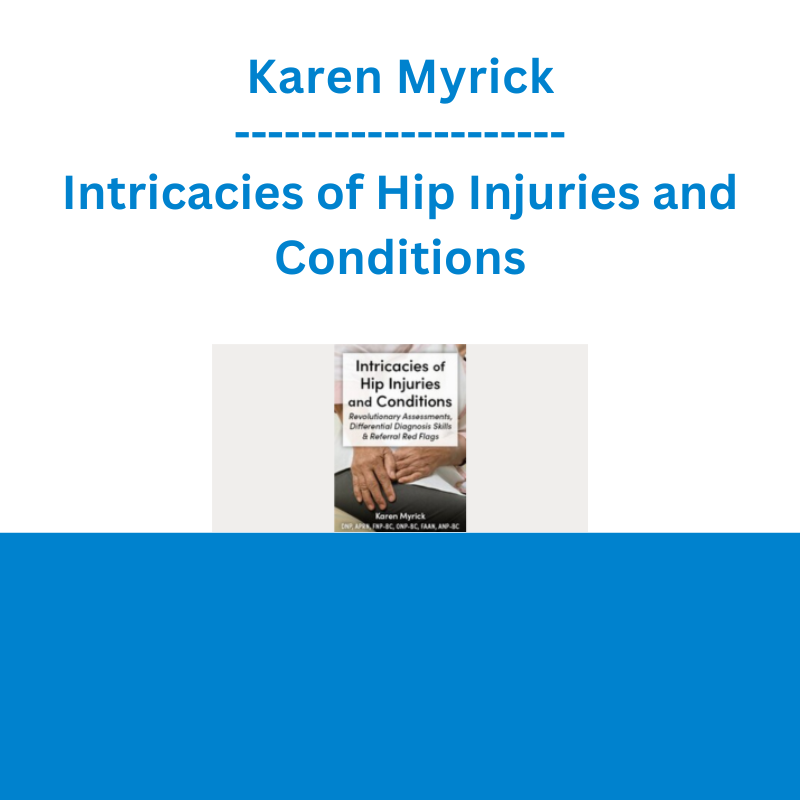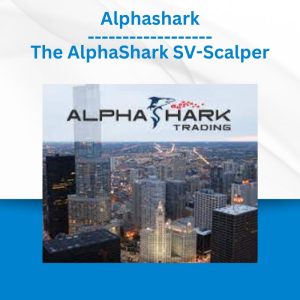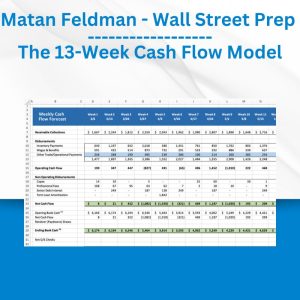*** Proof of Product ***
Exploring the Essential Features of “Karen Myrick – Intricacies of Hip Injuries and Conditions”
Speaker: Karen Myrick, DNP, APRN, FNP, ONP, FAAN
Duration: 2 Hours
Format: Audio and Video
Copyright: May 22, 2024
Media Type: Digital Seminar
Speaker
Karen M. Myrick, DNP, APRN, FNP, ONP, FAAN, is a thought leader in her specialty, with unparalleled expertise in orthopedics and sports medicine. She will work through the intricacies of hip injuries and conditions. Delving deep into each diagnosis, you will understand the contextual background, which sets the stage for an understanding of its pathophysiology. From there, you will navigate through the clinical symptoms and assessment components, dissecting the nuances of physical examination techniques and diagnostic tests crucial for accurate diagnosis. Moreover, you will have an opportunity to explore a diverse spectrum of potential differential diagnoses, while also shedding light on optimal treatment modalities and the critical identification of referral red flags. Join us as we unravel the complexities of hip injuries, accessing invaluable insights to enhance clinical practice and optimize patient care outcomes.
Speaker Disclosures:
Financial: Karen Myrick has employment relationships with Orthopedic Associates of Hartford, Avon Family Medical Group, Pro-Heath Physicians Extended Hours and Express Care Centers, the University of Hartford, the University of Saint Joseph, Quinnipiac University, and Yale University. She receives royalties as a published author. Karen Myrick receives a speaking honorarium from PESI, Inc. She has no relevant financial relationships with ineligible organizations.
Non-financial: Karen Myrick is a member of the American Nurses Association, National Association of Orthopedic Nurses, National League of Nurses, and the Connecticut Nurses Association. She serves several committees, for a complete list contact PESI, Inc.
Objectives
- Determine the structures involved in hip function and their roles in movement and stability, to better comprehend the underlying mechanisms of hip injuries and conditions.
- Recognize and differentiate between various hip injuries and conditions such as labral tears, femoroacetabular impingement (FAI), osteoarthritis, and stress fractures.
- Select and interpret appropriate diagnostic tools including imaging studies and physical examination techniques for assessing hip injuries and conditions.
- Implement proactive measures to prevent hip injuries, including biomechanical considerations, strength and conditioning exercises, and ergonomic adjustments.
Outline
Osteoarthritis
- Clinical presentation
- Diagnostic criteria (including imaging studies)
- Pharmacological and non-pharmacological management options
- Indications for referral to specialists for further management or intervention
Greater Trochanteric Bursitis:
- Common causes
- Typical signs and symptoms
- Physical examination findings
- Diagnostic modalities
- Treatment options including activity modification
- Physical therapy
- Medications
- Potential complications
- When to consider referral for corticosteroid injections or surgical intervention
Slipped Capital Femoral Epiphysis
- Clinical presentation (including distinguishing features from other hip conditions)
- Physical examination findings (with emphasis on provocative maneuvers)
- Diagnostic imaging modalities (including X-rays and MRI)
- Acute management strategies
- Long-term complications such as avascular necrosis
Acetabular Labral Tears
- Common mechanisms of injury
- Clinical presentation (including provocative tests)
- Diagnostic imaging modalities (such as MRI arthrography)
- Conservative management options (including physical therapy)
- Surgical interventions (such as arthroscopic repair)
- Post-operative rehabilitation protocols
Posterior Hip Dislocation
- Mechanism of injury
- Clinical presentation (including physical examination findings such as leg length discrepancy and restricted range of motion)
- Diagnostic imaging (including X-rays and CT scans)
- Emergent reduction techniques
- Post-reduction management (including immobilization and rehabilitation)
- Potential complications
Fractures of the Femoral Shaft, Pelvis, and Proximal Femur
- Classification
- Mechanism of injury
- Clinical presentation
- Diagnostic imaging modalities
- Acute management (including stabilization techniques)
- Potential complications
- Long-term rehabilitation considerations for each specific fracture type
Hip Impingement
- Pathophysiology (including cam and pincer morphology)
- Clinical presentation (such as groin pain exacerbated by certain movements)
- Diagnostic imaging (including X-rays and MRI)
- Conservative management options (such as activity modification and physical therapy)
- Indications for surgical intervention (such as hip arthroscopy)
Osteonecrosis of the Hip
- Clinical presentation (including symptoms related to vascular compromise)
- Diagnostic imaging findings (such as characteristic changes on MRI)
- Treatment options (including conservative management)
- Surgical interventions (such as core decompression or hip replacement)
- Long-term monitoring considerations
Snapping Hips and Strains
- External and internal types
- Clinical presentation
- Physical examination findings
- Diagnostic imaging modalities (including ultrasound and MRI)
- Conservative management options (such as stretching and strengthening exercises)
- Indications for surgical intervention in refractory cases.
Stress Fractures of the Femoral Neck
- Risk factors (such as repetitive loading activities)
- Clinical presentation (including insidious onset of hip or groin pain)
- Diagnostic imaging findings (such as MRI or bone scan)
- Management options (including activity modification and protected weight-bearing)
- Potential complications.
Transient Osteoporosis of the Hip
- Clinical presentation (including acute onset of hip pain)
- Diagnostic imaging findings (such as characteristic MRI changes)
- Treatment options (including rest, protected weight-bearing, and bisphosphonate therapy) prognosis
There will be an emphasis on evidence-based practice, clinical reasoning, and practical application of concepts in the assessment, diagnosis, and management of these orthopedic conditions.
Please see the full list of alternative group-buy courses available here: https://lunacourse.com/shop/










 Erik Banks - Alternative Risk Transfer
Erik Banks - Alternative Risk Transfer  Julie Stoian & Cathy Olson - Launch Gorgeous - Funnel Gorgeous Bundle
Julie Stoian & Cathy Olson - Launch Gorgeous - Funnel Gorgeous Bundle  Trade Like Mike - The TLM Playbook 2022
Trade Like Mike - The TLM Playbook 2022  Crypto Dan - The Crypto Investing Blueprint To Financial Freedom By 2025
Crypto Dan - The Crypto Investing Blueprint To Financial Freedom By 2025  Team NFT Money - Ultimate NFT Playbook
Team NFT Money - Ultimate NFT Playbook  Money Miracle - George Angell - Use Other Peoples Money To Make You Rich
Money Miracle - George Angell - Use Other Peoples Money To Make You Rich  Jesse Livermore Trading System - Joe Marwood
Jesse Livermore Trading System - Joe Marwood  Greg Loehr - Advanced Option Trading With Broken Wing Butterflies
Greg Loehr - Advanced Option Trading With Broken Wing Butterflies  Forexmentor - Recurring Forex Patterns
Forexmentor - Recurring Forex Patterns  Matthew Kratter - Trader University
Matthew Kratter - Trader University  SMB - Options Training
SMB - Options Training  George Fontanills & Tom Gentile - Optionetics 6 DVD Series Home Study Course (Digital Download)
George Fontanills & Tom Gentile - Optionetics 6 DVD Series Home Study Course (Digital Download)  Akil Stokes & Jason Graystone - TierOneTrading - Trading Edge 2019
Akil Stokes & Jason Graystone - TierOneTrading - Trading Edge 2019  Matan Feldman - The 13-Week Cash Flow Modeling - Wall Street Prep
Matan Feldman - The 13-Week Cash Flow Modeling - Wall Street Prep  George Fontanills & Tom Gentile - Optionetics Wealth Without Worry Course
George Fontanills & Tom Gentile - Optionetics Wealth Without Worry Course  Ed Ponsi - Forex Trading
Ed Ponsi - Forex Trading  Sovereign Man Confidential - Renunciation Video
Sovereign Man Confidential - Renunciation Video  Toshko Raychev - Profit System + ITF Assistant
Toshko Raychev - Profit System + ITF Assistant  Simpler Trading - Bruce Marshall - The Options Defense Course
Simpler Trading - Bruce Marshall - The Options Defense Course